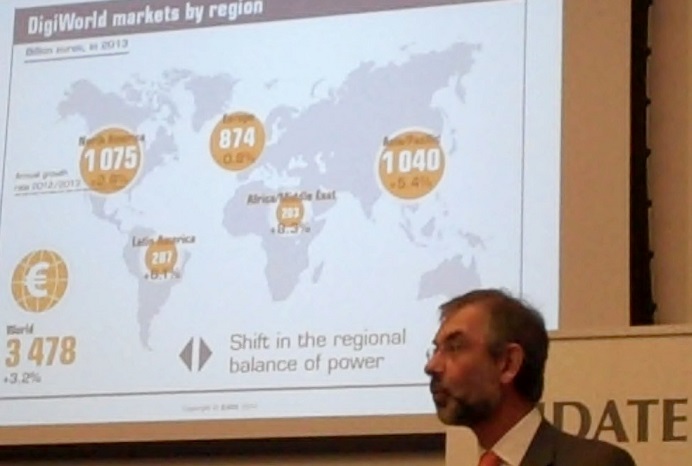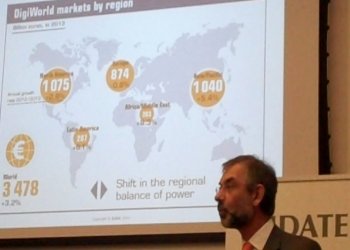 Competition regulation in Europe is holding down prices for telecoms users, but in turn this is limiting investment by companies in the region, says a researcher. The latest IDATE DigiWorld Yearbook assesses the marketplace, and says that while there is an upwards trend in usage and consumption of devices and services.
Competition regulation in Europe is holding down prices for telecoms users, but in turn this is limiting investment by companies in the region, says a researcher. The latest IDATE DigiWorld Yearbook assesses the marketplace, and says that while there is an upwards trend in usage and consumption of devices and services.
Competition regulation in Europe is holding down prices for telecoms users, but in turn this is limiting investment by companies in the region, says a researcher.
The latest IDATE DigiWorld Yearbook assesses the marketplace, and says that while there is an upwards trend in usage and consumption of devices and services, the lack of a single market in Europe, and the power of global internet companies is leading to it declining as a world force.
DigiWorld markets globally reported a slight uptick in growth in 2013: going from 2.8% in 2012 to 3.2%, generating close to €3,500bn in revenue. After a decrease in 2012, a second dip in DigiWorld's European markets came in at about 1% in 2013.
While consumer electronics is the largest component in this fall, telecom services also fell by 2.7%. It concludes that in the five years 2008-2013, the segment shrank by 12% in the five largest European markets; Spain itself saw telcoms services down by 10% in 2013, while France was down 9%, mainly down to falling mobile revenue. It makes Europe even less homogeneous, UK tending to rise, Germany stay the same and others varied.
 Europe's comms business used to be about one third of the global total, says Jean-Michel Chapon (above), director of the DigiWorld Institute, UK. "Now it is under a quarter."
Europe's comms business used to be about one third of the global total, says Jean-Michel Chapon (above), director of the DigiWorld Institute, UK. "Now it is under a quarter."
But the pressures on the industry are maintained as user expectations continue to rise, and new technologies such as mobile develop further and demand more from networks. IDATE CEO, Yves Gassot comments, “A bumper crop of events unfurled in 2013 and the early months of 2014, hinting at what the future might hold for digital industry markets. Mobility, the cloud and big data are, the core issues up for debate amongst digital ecosystem stakeholders.”
DigiWorld Yearbook’s editor-in-chief, Didier Pouillot, commented “This modest improvement is a reflection, first, of the ongoing healthy momentum in key sectors and, second, a still bleak economic climate, especially in Europe”.
The first trend is driving a continual rise in consumption, traffic, and a steady rate of device (smartphones, tablets, smart TVs) replacement and upgrades, and is forcing hardware suppliers to work hard to keep up with demand. The second trend is tempering the first as businesses and consumers are feeling the pinch and being careful with their spending.
A long journey still lies ahead for Europe in its bid to achieve a single telecommunications market, it says. To be successful, the regional consolidation that now appears to be properly underway will need to rise to three main challenges:
- price wars that threaten telcos’ ability to invest in new generation infrastructure;
- a single European telecoms market, which includes cross-border deals and the creation of truly pan-European players;
- achievement of the margins and critical mass needed to reinvent thetelco business model, in an environment being dictated by powerful Internet companies.